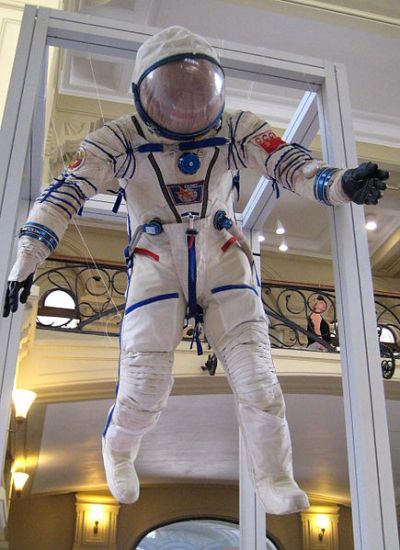The attempt to settle space is not a fantasy, it’s an inevitability,
according to explorer and archaeologist, Cameron Smith. However if we’re
going to achieve it then we need to make a major shift in our thinking,
away from individual space explorers and towards diverse communities of
space pioneers. During his recent
TEDx Brussels talk,
he explained how we also need to ‘rethink, reimagine and rebuild’ the
technologies needed to get and maintain us there: essentially, it needs
to be much easier and cheaper to access space.
You might not expect an archaeologist to take to the TEDx stage with
a talk on space suits but Smith’s experience of exploring the past has
fired his interest in space exploration: ‘When you spend your time
looking at the remains of ancient civilisations what you see is that
civilisations fail. We have about a 99 % failure rate for civilisations.
And one way to preserve our civilisation is to make our species
multi-planetary.’
It may sound like the plot of an epic sci-fi adventure but this
challenge is very much on the radar of the scientific community. As far
back as 1567, Francis Godwin said that it was inevitable that humanity
would try to colonise space. Leading thinkers of today like Stephen
Hawking are also backing the idea. The problem, Smith says, is that our
energy and resources are focused on sending a select few individuals to
space, when we need to be thinking in terms of large communities.
‘We’ve been in the mode of a tightly constrained set of individual
people popping up into space and popping back,’ Smith said. ‘If we want
to do space colonisation, we need people of all varieties. That requires
a major shift in our thinking, away from individuals and towards
communities and cultural groups. This requires an anthropology of space
colonisation.’
Another thing that we’re going to need, according to Smith, is
cheaper technology, and that’s where Smith and his group, Pacific Space
Flight, come in. At the moment, a launch entry NASA/ACES suit costs
about $88 000 to $100 000. Smith believes this can be replaced by a
$2 000 suit, opening up the possibilities for space travel en masse:
‘We’ve built a suit inside my home, which is my workshop … All of the
NASA performance criteria for a launch entry suit are being met – it
keeps the body cool, maintains the pressure, gives the wearer mobility
at high pressure, now even at lunar pressure.’
Pacific Space Flight has collaborated with private space programme
Copenhagen Suborbitals who build their own spacecraft. Smith’s team were
able to test their suits in the capsule and seat of the Danish
programme. Testing is ongoing in a wide range of other conditions and
environments: ‘I’ve spent about 100 hours in the suit, part of that has
been underwater weighted to a chair. I sat there and we looked for
leaks. Our suit has a lower leak rate than Gemini suits from the 1960s.’
The suit has also been tested in cold chambers and altitude chambers
where it maintained a healthy blood oxygen level. It has also trekked
across the Simpson Desert in Australia. One of the next steps is high
altitude ballooning expeditions.
Smith says his processes replicate those of NASA in the 1960s – only without the big budget.
Like most pioneers, Smith and his team are learning more through
their failures than their successes: ‘Most of the money – which is very
little – that I’ve spent has been in finding out how not to do it.’ He
concluded his talk with a promise to the TEDx Brussels crowd, ‘Now I
know how not to do it the next generation garment will be a third of the
weight and a third of the bulk.’
For further information, please visit:
TEDx Brussels
http://www.tedxbrussels.eu/
